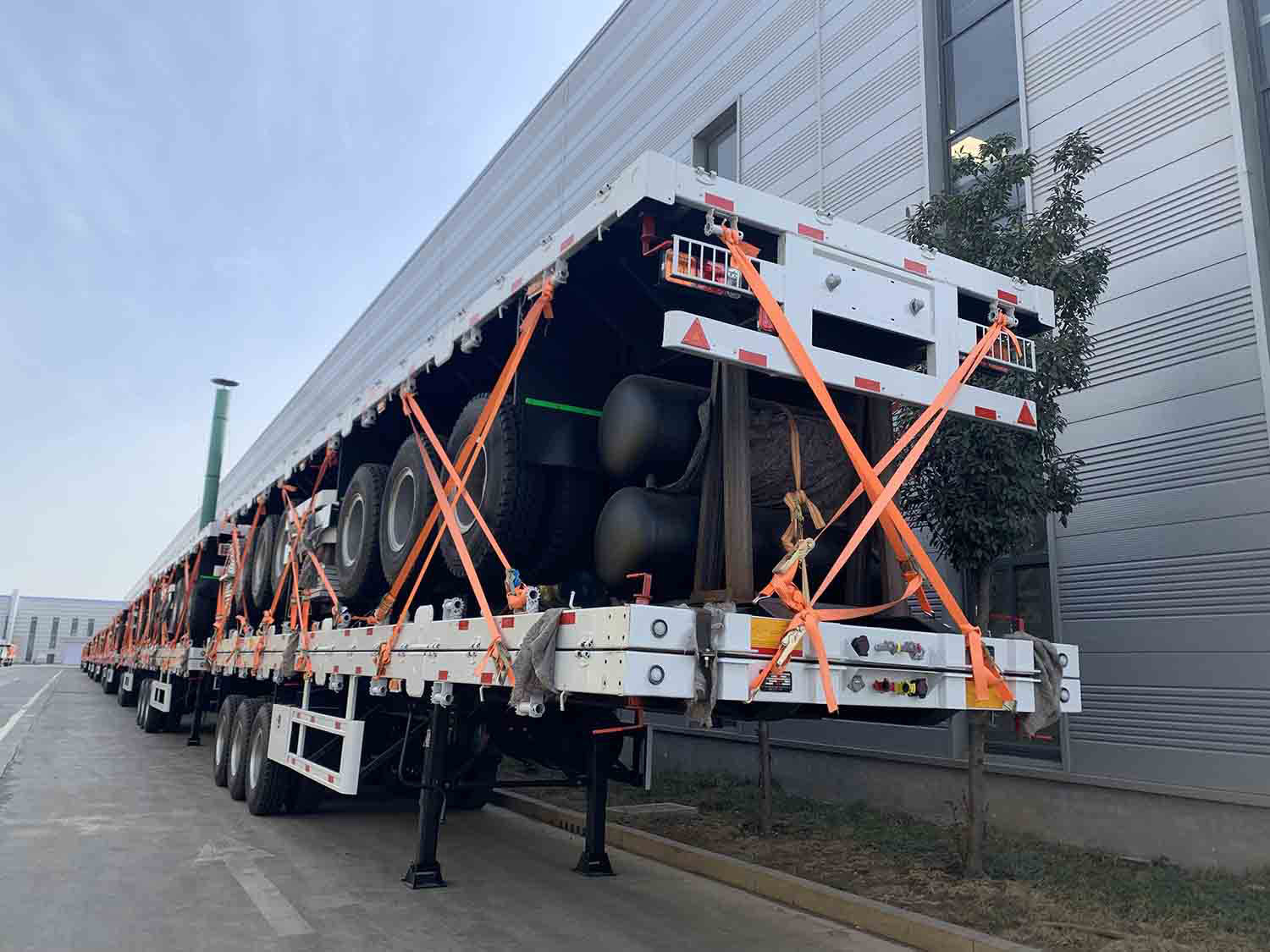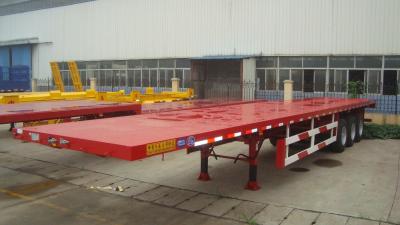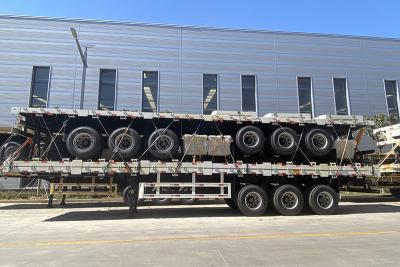Types Of Flatbed Trailers
1. Standard Flatbed Trailer: This is the most common type of flatbed trailer. It has a basic design with a flat, open platform that allows for the transportation of a wide variety of cargo. It is typically equipped with stake pockets and tie-down points for securing the load.
2. Drop Deck Trailer: Also known as a lowboy or step deck trailer, the drop deck trailer has a lower deck height than a standard flatbed trailer. This allows for the transportation of taller cargo that cannot fit within the height restrictions of a standard trailer. The drop deck design also provides for better stability and load securement options.
3. Extendable Flatbed Trailer: These trailers have the ability to extend their length to accommodate longer loads. They typically have telescopic beams or sliding mechanisms that can be adjusted to different lengths. This makes them ideal for transporting oversized or extra-long cargo.
4. Removable Gooseneck (RGN) Trailer: RGN trailers have a detachable front end, commonly referred to as a gooseneck. This allows for the front of the trailer to be detached and lowered to the ground, creating a ramp for equipment or cargo to be loaded onto the trailer. RGN trailers are often used for transporting heavy equipment or machinery.
5. Curtain Side Flatbed Trailer: This type of trailer has a movable curtain on the sides that can be easily opened or closed. It provides the convenience of easy loading and unloading from the sides while still allowing for top-loading capabilities. Curtain side trailers are commonly used for transporting goods that require quick and easy access.
6. B-Train Flatbed Trailer: A B-Train trailer consists of two separate trailers that are connected by a fifth wheel and kingpin. The front trailer is shorter in length and is attached to the rear trailer, which is longer. This type of configuration increases the overall length of theThere are several types of flatbed trailers used for transporting goods. Some common types include:
7. Conventional Flatbed Trailer: This is the most basic type of flatbed trailer, consisting of a flat, rectangular bed with no sides or roof. It is typically used for hauling general cargo, such as construction materials, machinery, or equipment.
8. Drop Deck Trailer: Also known as a step deck trailer, this type features two deck levels - one at a standard height and another lower deck towards the rear. This allows for increased vertical clearance when loading taller cargo, such as vehicles or machinery.
9. Extendable Flatbed Trailer: This type of flatbed trailer can be extended in length to accommodate oversized cargo. It typically has sliding or telescoping sections that can be adjusted as needed.
10. Curtain-side Flatbed Trailer: Also known as a tautliner, this type combines the flexibility of a flatbed with the convenience of a curtain-sided trailer. It has movable curtains made of flexible material that can be easily opened or closed, providing quick access to the cargo.
11. Removable Gooseneck (RGN) Trailer: This type of flatbed trailer has a detachable front end or gooseneck, which allows for easy loading and unloading of heavy equipment, such as construction machinery. The detachable gooseneck can be lowered to the ground to create a ramp for loading.
12. B-Train Trailer: A B-Train trailer consists of two trailers connected together, forming a longer combination vehicle. The front trailer is attached to the tractor, while the rear trailer is connected to the front trailer. This type is commonly used in certain regions to maximize cargo capacity and reduce transportation costs.
13 . Heavy Haul Trailer: This type of flatbed trailer is specifically designed for transporting extremely heavy and oversized loads, such as construction equipment or industrial machinery. It is equipped with multiple axles and a reinforced frame to distribute the weight evenly and provide added stability.
These are just some of the commonly used types of flatbed trailers. The choice of trailer depends on the specific cargo being transported and the requirements of the shipping company.



